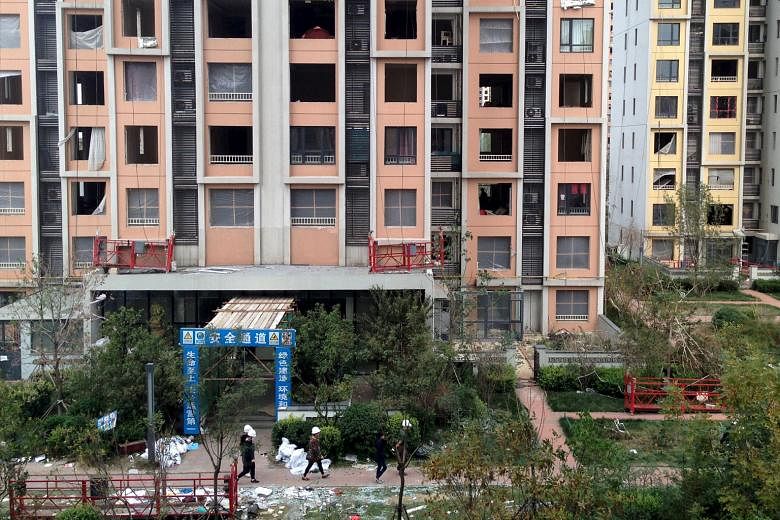BEIJING • The blasts that killed 165 people in one of China's busiest seaports last year were a result of a culture of mismanagement at a chemical warehouse and lax oversight by regulators, according to a government investigation whose results were released on Friday.
In the report, officials with China's State Council, the country's Cabinet, described the explosions in Tianjin six months ago as a man-made disaster that had caused US$1.1 billion (S$1.55 billion) in damage, destroying more than 300 buildings and injuring nearly 800 people, according to state news agency Xinhua.
The report was published on the State Administration of Work Safety website.
Officials vowed to punish 123 government workers, including five at the ministerial level, in connection with the blasts, citing dereliction of duty. The report added that some officials connected to the explosions were guilty of "corruption" and "abuse of power".
Another 49 people have already been placed under investigation, many of them employees of Rui Hai International Logistics, which operated the warehouse at the centre of the blasts.
The explosions, one of the worst industrial disasters in Chinese history, prompted unusually impassioned calls for action from the Communist Party. Many pointed to the disaster as a watershed moment, saying it exposed the high cost of rapid industrialisation.
Prominent environmentalist Ma Jun said that the investigation underscored the need to improve communication among government departments and to crack down on companies that violated safety rules.
"This was by no means at all a natural disaster," Mr Ma said.
"It was caused by human error - one error after another, one failure after another."
Greenpeace called for an overhaul of China's chemical management system, saying that "Tianjin should be the catalyst for this".
The report said the explosions occurred when an improperly stored chemical became too dry and ignited, setting fire to nearby containers full of explosive substances.
The chemical, nitrocellulose, is used in nail polish and lacquer.
It was near containers of ammonium nitrate, a highly explosive chemical commonly used in fertilisers. Officials said that Rui Hai had committed a series of safety violations, including illegally building a freight yard, illegally storing hazardous materials and showing "inept safety management".
Rui Hai was storing more than 11,000 tonnes of hazardous goods at its warehouse before the disaster, far in excess of what was allowed, the investigation found.
The chemicals were stored some 600m from residential buildings, whereas Chinese regulations say hazardous materials should be stored at least 1km from homes.
Rui Hai's licence will be revoked, and its executives will be banned from working in the chemical industry, the report said.
The blasts also released clouds of toxic chemicals into the air and created a large pool of contaminated water. The report recommended continued monitoring of long-term health and environmental damage.
NEW YORK TIMES, AGENCE FRANCE-PRESSE

